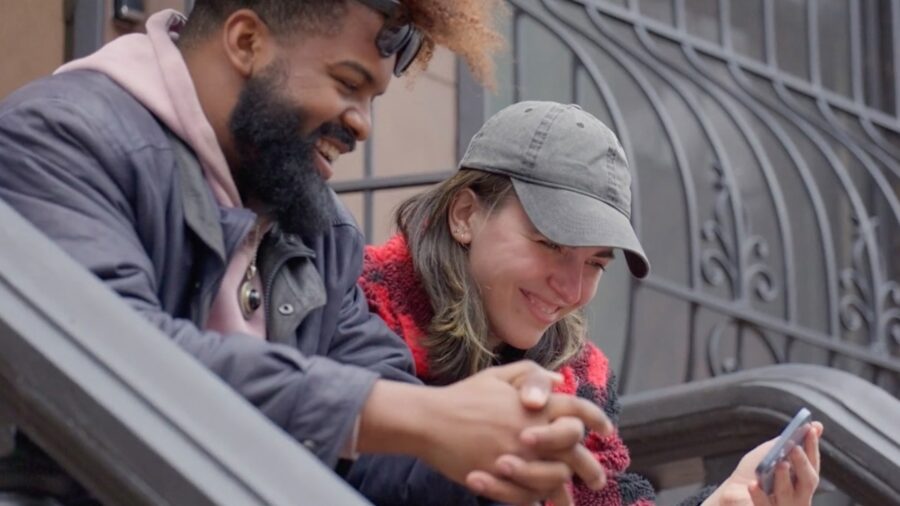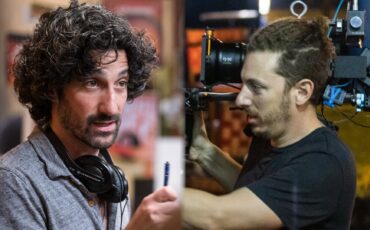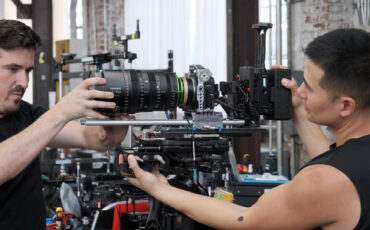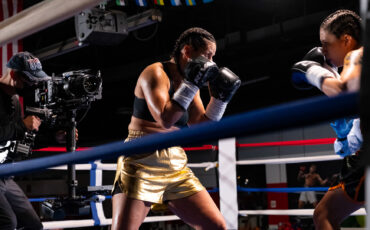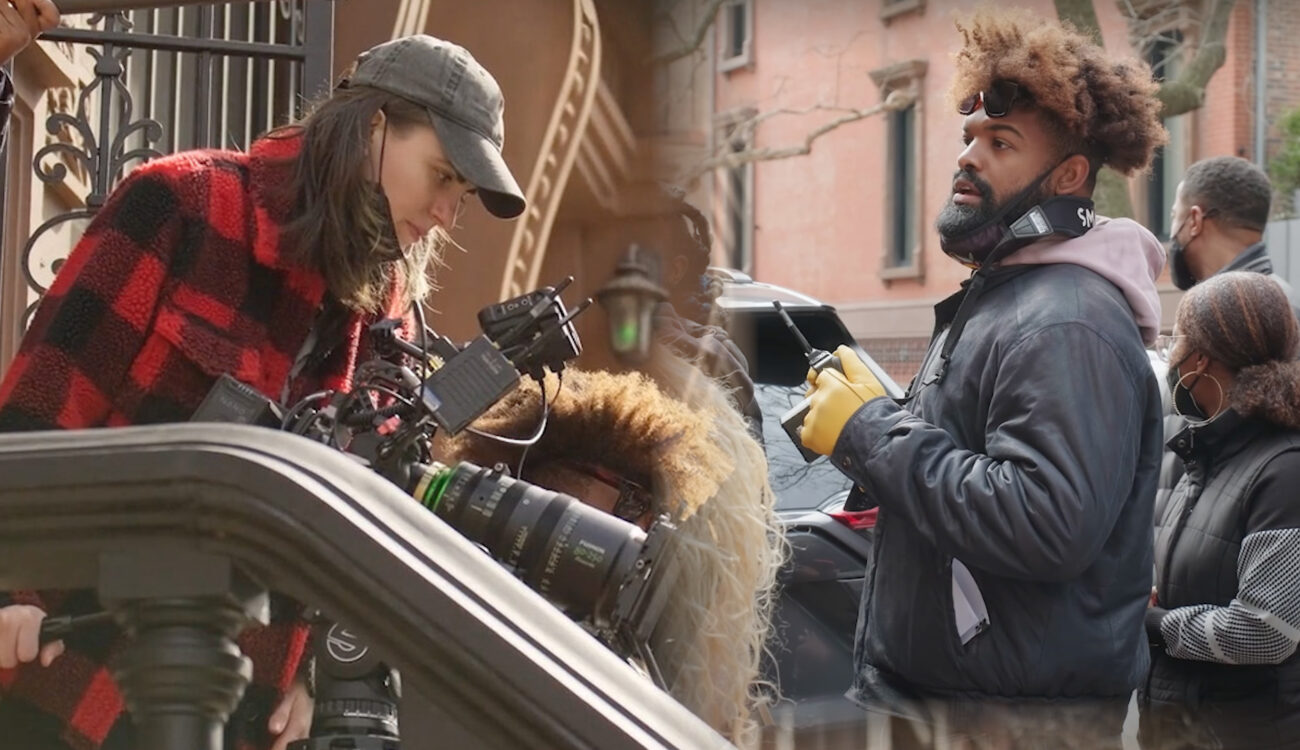
CineD is always searching for a way to connect creators and manufacturers – and, of course, to help filmmakers show their work. This is why we teamed up with FUJIFILM to show our filming community work that has been done with FUJIFILM cameras. If you use a FUJIFILM camera and are interested in getting your work featured, click here to learn more. “In the Spotlight” is proudly sponsored by FUJIFILM.
For this “In the Spotlight” article, we engaged with Director/Creative Producer/Filmmaker Cameron Tyler Carr and Director of Photography Nona Catusanu, who were kind enough to share details about their latest creation “Harlem Fragments“, an autobiographical story of the breakdown of a Harlem Black family during the 2008 recession. Told through the eyes of a young boy using FUJIFILM X-H2S, the film is made up of a mixture of present-day footage, flashbacks, and animated memories.
First things first, we wanted to hear from Cameron about describing the film and the challenges he had in executing this project.
Director’s notes by Cameron Tyler Carr
Harlem Fragments is an Afro-Futurist scrapbook storytelling about the beautiful destruction of a Harlem Black family during the 2008 recession, told from the POV of a 10-year-old, and inspired by an extremely difficult point in my life, and functions as a PSA across all communities to relate to, for families, parents and children alike. The film explores the haunting societal pressures of achieving the Black American dream and examines the philosophical question of what defines happiness from those values. Nona and I wanted it to feel like flipping through a nostalgic family photo album while sitting in the cockpit of turbulent chaos. In order to achieve this stylistically, the storytelling is told through the manipulation of time and space, euphoric animation segments that act as the undercurrent of the film, and visceral cinematography that transports the audience through the family’s emotional album of memory fragments.
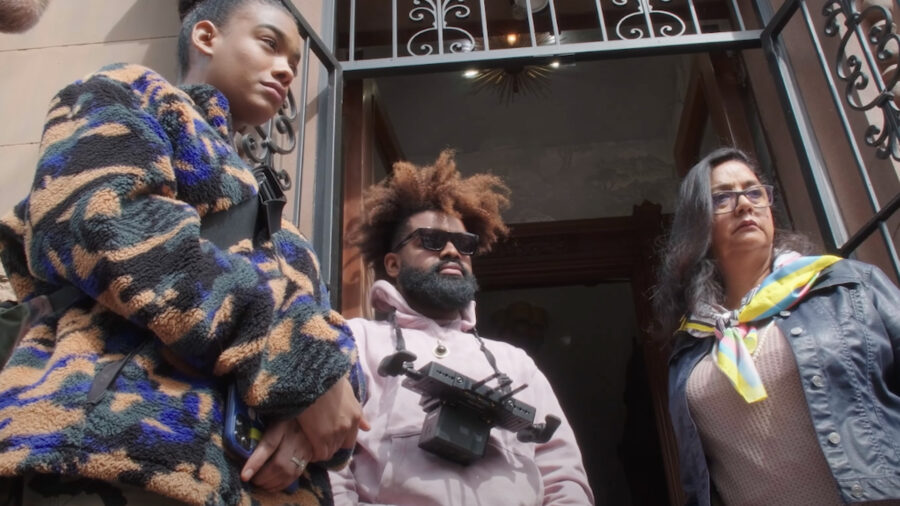
Being able to pull this off and capture this vision visually was a tall order. Each one of our scenes in the film was a different camera stunt from the last, moving from sticks to steadicam, to SnorriCam, to dolly, to a distorted wide-angle fisheye. The biggest challenge was being able to fit our setups and ambitious approaches for storytelling devices within our very tight three-day shoot schedule runway. Through pairing FUJIFILM’s nimble and versatile X-H2S body with an arsenal of FUJINON Premista lenses, and being able to leapfrog each next setup with prepped alternating A-Cam and B-Cams to sub in, we were able to fly through our gymnastics of a shotlist proactively always one step ahead. It’s always all in the prep and strong trust in your crew. Crew chemistry or bust.
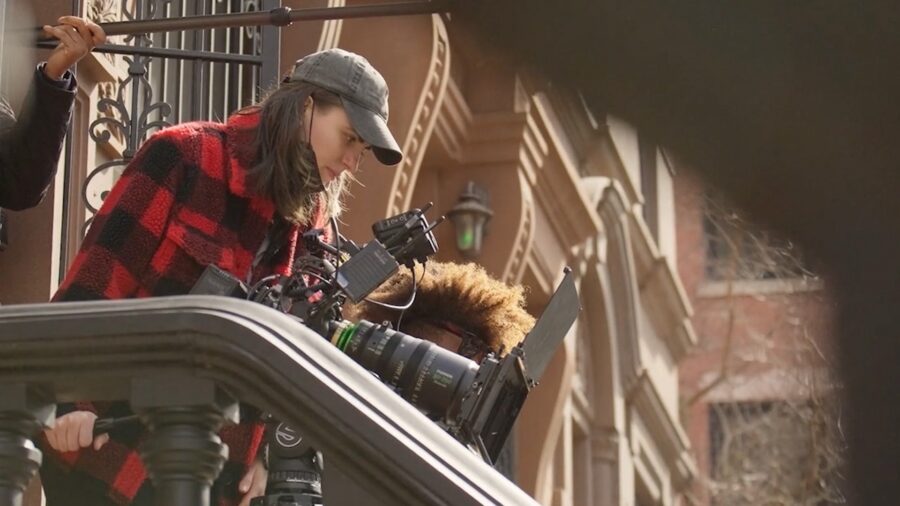
Director of Photography Nona Catusanu
Next, we asked DP Nona Catusanu to share details about her filming career and her impressions of working on this film project.
– Name: Nona Catusanu
– Currently based in: NYC
– Language(s) spoken: English, Romanian
– Occupation: Cinematographer
– How did you get started in our industry?
I have always wanted to work in visual arts, I wanted to be a painter. After getting into NYU Tisch School of Arts for undergrad, I pivoted to cinematography. I was intrigued about using the same principles of composition, color, and light to capture a moment in time. I later attended The Film and TV School of the Academy of Performing Arts in Prague, Czech Republic for their Master’s program in cinematography. Their rigorous conservatory approach helped shape my craft and refine my taste. Once I returned to the States, I shot every project that came my way to build up my portfolio. I was very lucky to reconnect with many of my former classmates to collaborate on everything from narrative to commercial to documentary work.
– Current assignments:
I’m currently in post for a feature documentary and several short narrative films.
– What types of productions do you mostly shoot?
The majority of my work is in the indie narrative world.
– What is your dream assignment/job in our industry and what are you really passionate about?
I have been shooting a lot of genre films. I would love for my next feature to be a slow-burn psychological horror. One of my favorite films in the last five years is Saint Maud; I would love the opportunity to shoot something as richly haunting as that. I welcome the challenge to explore difficult human behavior – and I love it when the result of that is a visually dense and painterly image.
– In the work that you are presenting us, now that it is done, what would you have done differently throughout the production?
In hindsight I would have done a lot more testing prior to the shoot – it was my first time shooting narrative with the Fujifilm XH2S and our particular story had many different looks that spanned present-day, fantasy, and flashbacks. There were a lot of low light scenes where we really pushed the sensor to its limits and one particularly challenging scene lit by blacklight. Our colorist David Franzo at Harbor Picture Company did an incredible job in the grade to separate color and retain detail in the shadows while still maintaining a dramatic look. Testing how the camera fares in these different low-light situations would have definitely streamlined the process.
– What current camera, lenses, and sound equipment do you use?
I usually stick with the ARRI family, the majority of my narrative work is either the Alexa Mini or Mini LF. Currently working with the Alexa 35 and am fully in love. We shot the majority of Harlem Fragments on the FUJI Premistas, the 19-45mm T2.9, 28-100mm T2.9, and 80-250mm T2.9 and they’ve since become a favorite choice, especially the 19-45mm wide-angle zoom lens. One of the few zoom options for large-format sensors that delivers edge-to-edge sharpness yet retains a gorgeous cinematic look with rich tonality and beautiful bokeh. Can’t comment on sound gear, I am totally sound illiterate haha.
– Why did you choose to work with this specific camera and how did it behave in the field?
The FUJIFILM XH2S produces a beautiful image. It’s a beautiful image in a small package that made it possible for us to quickly switch from locked off, to handheld, to steadicam. We were filming in a Harlem brownstone in very narrow hallways and tight spaces so the small size provided us with a lot of options for where to place the camera and opened up the composition and coverage possibilities. The film is from the perspective of a young boy so this allowed us to see the space through his eyes and get close to his point of view. It was also the actor’s first film so I felt that it was important to keep the camera build small and friendly to not overwhelm or intimidate him.
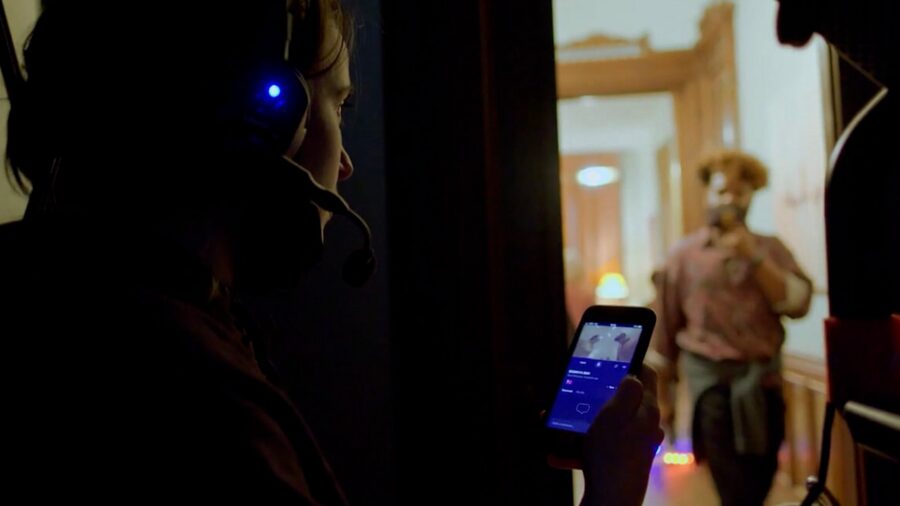
– You chose to shoot your project with the Fujifilm XH2S. Did you impose on yourself any limitations like not shooting with a tripod?
Quite the opposite! I wanted to take advantage of the small size of the build and see how many setups we could try where an otherwise larger build would be too cumbersome. One setup I was looking forward to was finally using a SnorriCam – it’s every film nerd’s dream and director Cameron Carr and I wanted that dizzying effect to transport us through the disorienting memories of our main actor. We were really excited to play with it, but unfortunately, our star was just too small in stature and couldn’t move safely (or all that much) with the vest on. Next time!
– What’s your favorite lighting equipment and why did you choose that kit over other solutions?
We shot Harlem Fragments on location in a beautiful brownstone in Harlem. This meant tall ceilings, dark wood, narrow hallways and rooms, and windows only in the front and back of the house. For the daytime scenes, we pushed M40s through the windows on the ground floor and used Aputure 600c lights, LiteGear LiteMats, and Astera Titan tubes inside. For nighttime, we used Astera NYX bulbs in practicals, and the Litemats and Titan tubes. I don’t have a one-size-fits-all package, but I’m finding myself bringing Titan tubes and NYX bulbs on almost every narrative job, and I’ve been using Aputure’s gear more and more often – love that the units are lightweight, will fit in most locations (especially cramped NYC apartments) love their ease of use, and the quality of light.
– Do you use drones/gimbals in your productions? If so, what is the most effective way you’ve found of deploying them?
Not often to be honest! I have used drones for establishing shots or interstitial location shots – I just used the DJI Mini 3 Pro on a doc series with some beautiful results. I’ve used the DJI RS 2 with the FUJIFILM X-H2S and love how lightweight and ergonomic it is, it makes gimbal OPing for this size camera a breeze.
– What editing systems do you use and are you satisfied working with it?
I am… not much of editing. I’ll futz around in Adobe Premiere if I absolutely need to get something out though. Don’t even ask me about Avid.
– How much of your work do you shoot in “flat picture profile” and what is your preferred way of color correcting?
All of it in order to get the most out of the camera’s dynamic range! And while I’ll try things out in Premiere or DaVinci Resolve, I always work with a colorist.
– How frequently do you travel and do you have any tips when it comes to packing your gear?
Haha, also not a great answer – I do travel quite a bit but I tend to rent from local vendors. I actually hate traveling with my own gear and don’t have much advice in this regard.
If you are interested in knowing more about Nona’s and Cameron’s projects, please head over to FUJIFILM’s Exposure Center page here.
You are welcome to visit Nona’s website and Instagram, and of course Cameron’s Instagram too.
Full disclosure: This “In The Spotlight” series of interviews is sponsored by FUJIFILM.
